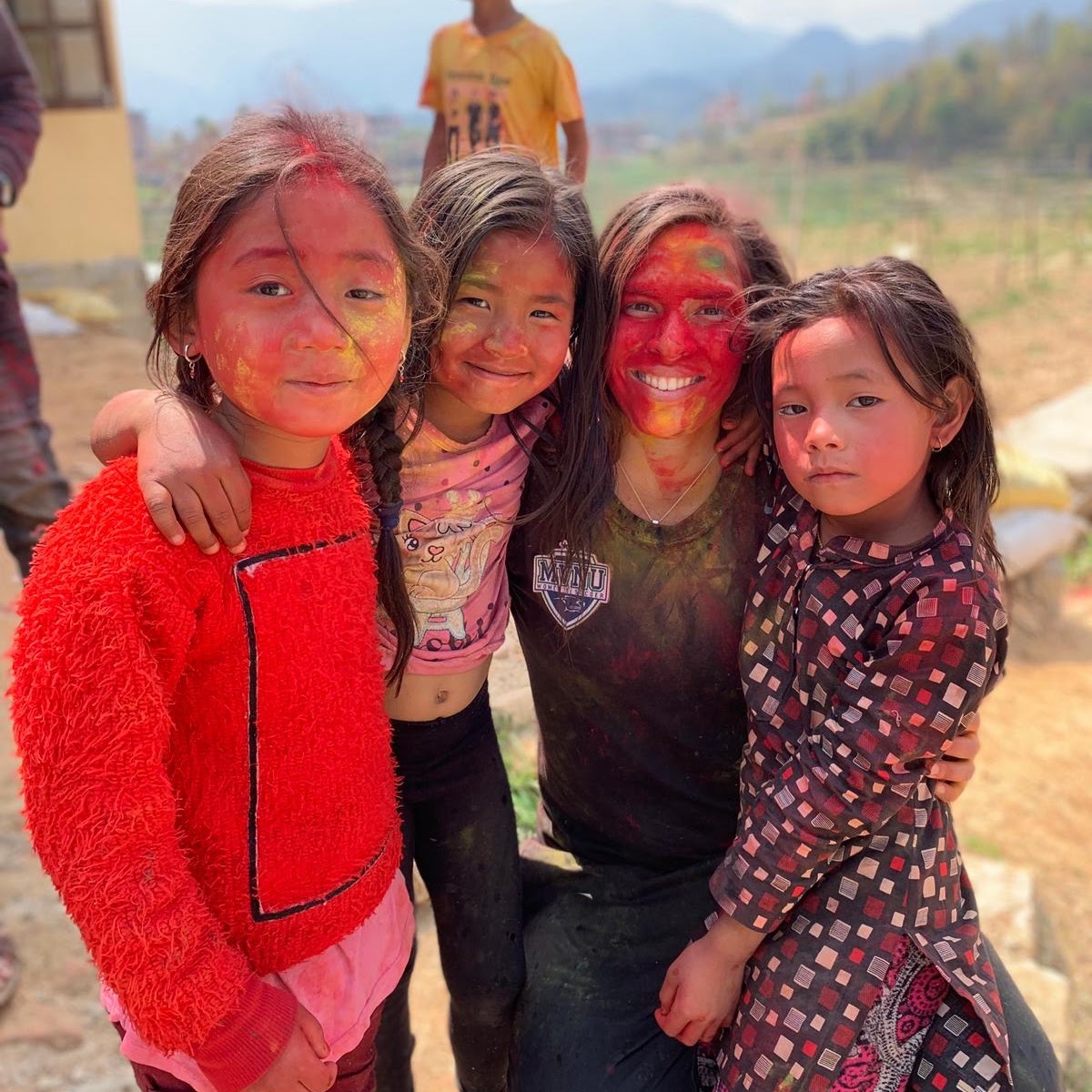Nepali Festivals: 101
Guest post by Regina Rudder from Trek to Teach
Regina Rudder first went to Nepal in 2018 with Trek to Teach. She was a volunteer teacher in Kliu, and loved every minute of life in the Himalayas. After returning from Nepal, she completed her Bachelor’s in English and earned her TESOL Certification. She then returned to Nepal in 2019 with the U.S. Peace Corps and taught English in Dhading. Currently, she is teaching at a Montessori school in America. In the future, Regina hopes to pursue a graduate degree and continue traveling, teaching, and coaching.
I’ve been super lucky to have experienced many Nepali festivals throughout my time teaching in Nepal, and I can honestly say that every festival is unique and meaningful. Here is a little bit about some of the major Nepali holidays, along with a few of my personal experiences!
The first festival falls in mid-April and is called Naya Barsha, the Nepali New Year. It’s based on Nepal’s lunar calendar, so years are recorded differently than by our Western calendar. Currently, it’s 2077 in Nepal! In major cities, Naya Barsha is celebrated primarily with parades, feasts, and dancing. I celebrated the 2076 New Year at a parade in Kathmandu and found myself completely covered in festive orange powder. It was a really fun experience!
The next major festival is Teej, which is in August. Teej is known as the ‘women’s festival’ and is 3 days long. The festival celebrates a woman’s devotion to her husband. More traditional Hindus still observe this holiday with a feast on the first day, fasting and prayer on the second day, and ritual bathing on the third day. However, many young women celebrate with dances and in-school celebrations. I really enjoyed dressing up in a sari and dancing with my students during this time.
October kicks off with the most important Hindu festival, Dashain. This is the longest festival of the year, about 10 days in length, and honors the goddess Durga. There are countless poojas (worship ceremonies) and goat sacrifices. Living with a Nepali host family really deepened this experience for me. It’s tradition to receive new clothes during Dashain, so my family (treating me like their own daughter) bought me a new kurta-suruwal. We spent the holiday sacrificing and eating goats, receiving tikka blessings (red powder mixed with rice) on our foreheads, and spending time with family. My host siblings and I also played on giant hand-built swings, otherwise known as pings.
A few weeks later, at the end of October, is another important holiday called Tihar (also known as Diwali). Tihar is a 5-day long holiday, which is incredibly fun for children. Children play Deusi, a game where they go around the village singing songs to collect money and sweets. Children also decorate rangoli (a special pattern) with colorful powder to welcome the goddess of money and wealth, Laxmi, into their homes. This festival culminates in “Bai-Tikka” or brother blessings. Sisters give gifts to their brothers and place a multi-colored tikka on their foreheads. In return, brothers give money to their sisters and place marigold garlands around their neck. This is my favorite holiday in Nepal, and the one I look forward to the most each year.
Last comes Holi. Celebrated at the end of February, Holi is a light-hearted festival celebrating the victory of good over evil and is one day in length. On this day, people play with colored powder and water. I’ve celebrated this festival 3 times and each year, it’s incredibly fun. My fondest Holi memory was with my students in Kliu, playing with colored powder at the school and washing off in the river.
Beyond these major festivals, Nepal has many other minor festivals such as Pondrha Assad, Loshar, and Shiva Ratri. No matter what time of year you travel to Nepal, you’ll be able to experience unique celebrations and make life-long memories!

